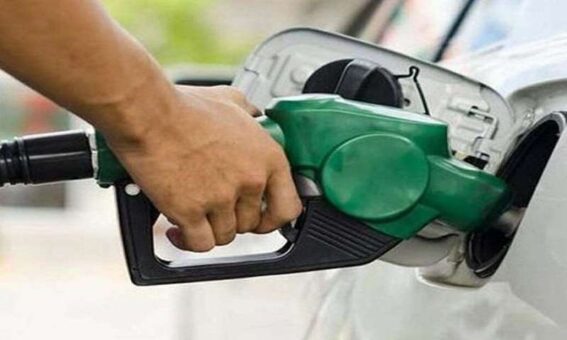The Pakistani government is set to announce new petroleum prices for the fortnight starting April 01, 2023, and people are expecting a significant relief in fuel prices due to the decline in global oil prices.
Prime Minister Shehbaz Sharif has already approved a plan to reduce the prices of petroleum products for the lower income group and provide petrol to motorcyclists, small car owners, and three-wheelers at a reduced rate.
READ MORE: PM Sharif inaugurates 1650MW Thar coal-fired electricity plants
However, to materialize the plan for reduced oil prices for certain segments of society, the government needs to create resources besides satisfying the International Monetary Fund (IMF) for creating additional space for the relief. The government is currently negotiating a bailout package with the IMF, which may include imposing sales tax on petroleum products.
In the previous fortnight, petroleum prices in Pakistan were increased due to an increase in Platts Singapore prices and depreciation of the Pakistani Rupee (PKR). The prices of MS (Petrol) and High Speed Diesel (HSD) increased by Rs5 and Rs13 per liter, respectively, while the price of kerosene oil increased by Rs2.56 by reducing government dues on it. The price of light diesel oil remained constant by adjusting government dues as well.
READ MORE: Ramazan relief package worth Rs5 billion announced
The decline in global oil prices has been significant over the past year, with Brent crude oil dropping by around 36 percent from $117 per barrel to $75 per barrel. This is largely due to lower demand as a result of easing economic growth globally. Pakistan, as a net importer of petroleum products to meet local demand, is expected to benefit from this decline in oil prices, with people hoping for a significant relief in fuel prices.
The government has already approved a plan to reduce the prices of petroleum products for the lower income group, and people are expecting a comprehensive strategy for effective implementation of this subsidy program. The upcoming announcement on March 31, 2023 for the next fortnight’s petroleum prices starting from April 01 to April 15 is eagerly awaited by the public.
It is important for the Pakistani government to create resources to implement the plan for reduced oil prices for certain segments of society. The government may need to explore various options such as increasing revenue through taxation or cutting down non-development expenditures to create additional space for the relief. It is also important for the government to balance its efforts to provide relief to low-income groups with its obligations to the International Monetary Fund (IMF).
READ MORE: Foreign investment into Pakistan sharply decline by 112% in 8MFY23
The IMF may require the government to maintain a certain level of revenue and manage its expenditures to meet its loan obligations. Therefore, the government needs to navigate this delicate balance and ensure that its policies are sustainable in the long run.
It is clear that while falling global oil prices have led to a reduction in Pakistan’s petroleum import bill, the devaluation of the Pakistani rupee has partially offset this benefit. The government has an opportunity to pass on the savings from falling global oil prices to the masses, especially to those in the lower income group.
The announcement of a petroleum subsidy program for this segment of the society is a step in the right direction, but the government will need to find resources to implement this program while also satisfying the requirements of the IMF.
It seems that the Pakistani government is facing challenges in managing its import bill for petroleum products, particularly due to the depreciation of the Pakistani Rupee against the US dollar. However, there have been some positive developments in the form of a decline in the global oil prices, which may provide an opportunity for the government to provide relief to the masses.
The government has already approved a policy to provide petrol at a reduced rate to lower income groups, and a subsidy of Rs50 per liter has been announced for consumers who have motorcycles, rickshaws, and smaller cars.
READ MORE: Pakistan’s current account deficit narrows by 313% in 8MFY23
At the same time, negotiations for a bailout package with the IMF have been ongoing, with the government presenting a mini budget to generate additional revenue, which may include the imposition of sales tax on petroleum products. The hope is to finalize a staff level agreement with the IMF for the release of a tranche of $1.2 billion.
It is worth noting that petroleum prices in Pakistan were increased in mid-March due to an increase in Platts Singapore prices and a depreciation of the Pakistani Rupee. The situation remains complex, and the government will need to carefully balance the need to manage its import bill while providing relief to the lower-income groups and maintaining economic stability.
The new prices will be effective from Marcy 16, 2023 as follow:
| Product | Existing prices w.e.f March 01, 2023 | New Prices w.e.f. March 16, 2023 | increase |
| MS (Petrol) | 267.00 | 272.00 | +5.00 |
| HSD | 280.00 | 293.00 | +13 |
| Kerosene | 187.73 | 190.29 | +2.56 |
| Light Diesel Oil | 184.68 | 184.68 | Nil |
